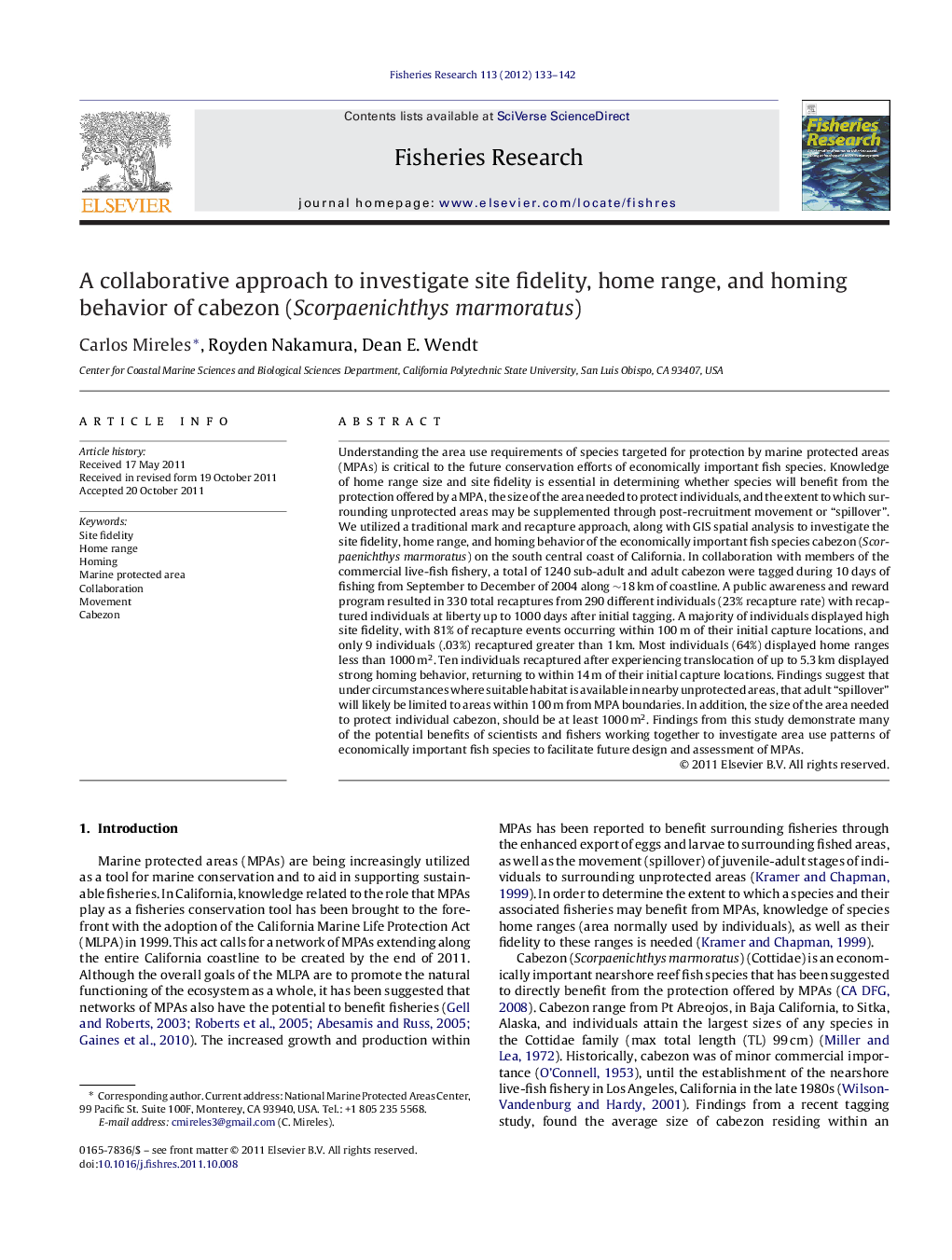| کد مقاله | کد نشریه | سال انتشار | مقاله انگلیسی | نسخه تمام متن |
|---|---|---|---|---|
| 4543518 | 1327151 | 2012 | 10 صفحه PDF | دانلود رایگان |

Understanding the area use requirements of species targeted for protection by marine protected areas (MPAs) is critical to the future conservation efforts of economically important fish species. Knowledge of home range size and site fidelity is essential in determining whether species will benefit from the protection offered by a MPA, the size of the area needed to protect individuals, and the extent to which surrounding unprotected areas may be supplemented through post-recruitment movement or “spillover”. We utilized a traditional mark and recapture approach, along with GIS spatial analysis to investigate the site fidelity, home range, and homing behavior of the economically important fish species cabezon (Scorpaenichthys marmoratus) on the south central coast of California. In collaboration with members of the commercial live-fish fishery, a total of 1240 sub-adult and adult cabezon were tagged during 10 days of fishing from September to December of 2004 along ∼18 km of coastline. A public awareness and reward program resulted in 330 total recaptures from 290 different individuals (23% recapture rate) with recaptured individuals at liberty up to 1000 days after initial tagging. A majority of individuals displayed high site fidelity, with 81% of recapture events occurring within 100 m of their initial capture locations, and only 9 individuals (.03%) recaptured greater than 1 km. Most individuals (64%) displayed home ranges less than 1000 m2. Ten individuals recaptured after experiencing translocation of up to 5.3 km displayed strong homing behavior, returning to within 14 m of their initial capture locations. Findings suggest that under circumstances where suitable habitat is available in nearby unprotected areas, that adult “spillover” will likely be limited to areas within 100 m from MPA boundaries. In addition, the size of the area needed to protect individual cabezon, should be at least 1000 m2. Findings from this study demonstrate many of the potential benefits of scientists and fishers working together to investigate area use patterns of economically important fish species to facilitate future design and assessment of MPAs.
► Site fidelity, home range, and homing behavior of cabezon (Scorpaenichthys marmoratus).
► Collaborative study between commercial fishers and university researchers.
► Most individuals displayed high site fidelity and maintained small home ranges.
► Individuals displayed homing behavior after translocations up to 5.3 km.
► Similar collaboration can be used to monitor and assess MPAs as a conservation tool.
Journal: Fisheries Research - Volume 113, Issue 1, January 2012, Pages 133–142